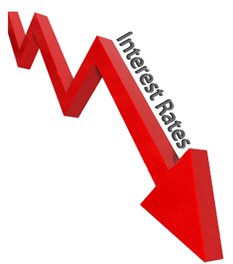We are now entering the eleventh year of our economic and housing recovery, which is the longest in U.S. modern history; an economic cycle normally lasts seven years. On the surface, the economy looks strong with above-expected job growth, low unemployment, wage increases, strong consumer spending, and the stock market hitting new records almost daily.
However, some underlying nagging problems with the economy this year have caused some talk about a recession on the horizon. Manufacturing and non-manufacturing segments are softening, consumer confidence has been declining (especially for future expectations) because of trade issues with China, and gross domestic product growth has been slowing.
During the last several months, the economy and housing have strengthened. In response to the soft underbelly of the economy, the Federal Reserve reduced interest rates by 0.25 percent three times this year, with the anticipated fourth reduction now on hold possibly through all of 2020. The 30-year mortgage interest rate dropped 24 percent from last year’s 4.83 percent to 3.7 percent in November, which is good for housing.
However, the home buyer has not responded as expected. This year, housing has not met expectations. Both single-family building permits and housing starts are only slightly above last year (2.8 percent and 0.6 percent respectively). Until the last several months, 2019 housing activity trailed activity in 2018.
Recommendations for the coming year
So, what about 2020? At this point, moderate growth for housing is being forecast for next year. On the positive side, the home buyer is back and confident with low mortgage rates. We are seeing the emergence of the millennial buyer moving to the suburbs. On the international trade front, the United States–Mexico–Canada Agreement has finally been approved, and Phase One of the trade deal with China has been reached.
Manufacturing and non-manufacturing will improve now that trade issues appear to be resolved. However, news for the year will be dominated by politics since it is an election year. Washington will probably be able to prop up the economy through election day, but some softening of the economy should be expected after the election, no matter which party wins.
I would be conservative on my business planning forecast for 2020, and bracket my most probable forecast with 10 percent above and below forecasts. The business forecast should be reviewed quarterly to determine which of the three is most accurate for your local market. There is too much uncertainty about the economy at this point.
Play the short game when it comes to buying land. You need to maintain about 18 months of finished lots to stay operational, but be very cautious about acquiring any long-term land commitments. Remember, land and land debt are what puts builders out of business. Upper-priced homes have been very soft in most markets, but the demand for lower-priced homes has been strong. Develop smaller, lower base-priced homes for your product mix to cater to the millennial buyer who is now in the market place.
If it is going to be a moderate growth year for your company in terms of homes sold, try working on growing your profits and efficiencies during this time. You will be better equipped to take advantage of the strong growth that is coming for the housing industry as the millennial generation fully enters the housing market and the heart of the baby boomer population downsizes to maintenance-free living.


